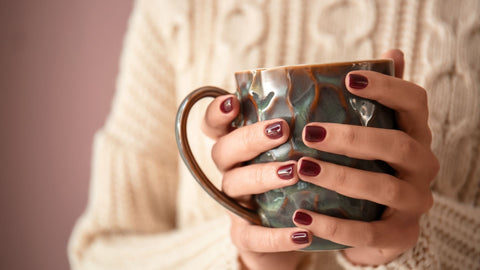Ceremonial Matcha vs Culinary Matcha: Exploring the World of Green Tea Powder 🍵
Matcha is a type of green tea made from Camellia sinensis leaves that have been ground into a fine powder. There are two main types of matcha green tea: ceremonial and culinary. Ceremonial matcha is the highest quality matcha available and is generally used for drinking straight, while culinary matcha can be used in mixed drinks, cooking and baking. In this blog post, we will dive into the world of matcha and compare the different grades, colours, tastes and textures.

Ceremonial vs Culinary Matcha: Understanding the Difference 🌿
Both ceremonial and culinary matcha are made from the same plant. But the difference in quality is due to the different growing and processing methods.
Ceremonial grade matcha is the highest quality matcha available. It is made from young leaves that are shade-grown for three to four weeks before harvest. The increased chlorophyll during this process gives it its brilliant green hue! The leaves are then steamed, dried, and ground into a fine powder. Ceremonial grade matcha has a bright green colour and a slightly sweet taste. It is the most expensive type of matcha because of the time, energy, and quality of leaves used in its production, as well as high demand.
Culinary grade matcha is made from lower parts of the tea plant, and therefore use older leaves that have been more exposed to direct sunlight. The leaves are picked, steamed, dried and ground into a fine powder. Culinary matcha contains less chlorophyll, and therefore has a duller green colour in comparison. It has a more bold and bitter taste, and typically used for everyday recipes where matcha is one of many ingredients (lattes, baking, smoothies). It also tends to be less expensive than ceremonial grade matcha.
The different growing methods impact the flavour, colour, and texture of matcha.

Colour 🌱
Matcha gets its rich green colour from chlorophyll. Chlorophyll is a pigment found in plants that give them their characteristic green colour. It's an essential part of photosynthesis, the process by which plants convert sunlight into chemical energy that they can use to grow and thrive.
Matcha is especially rich in chlorophyll because the whole leaf is ground into a powder and consumed.
The differences in colour for ceremonial or culinary matcha are due to their different growing and processing methods. Ceremonial matcha is made from young leaves that are shade-grown, and have more chlorophyll. Culinary matcha is made from older leaves that are grown in direct sunlight and has a duller green colour.
The word "culinary" can be confusing for some, as culinary matcha can range so widely! Culinary grade matcha showcases a spectrum of colour, with the highest quality presenting a bright green. As the quality decreases, the colour shifts towards a more yellowish-green hue, a sign of exposure to more sunlight and lower chlorophyll levels.
A good rule of thumb when looking for matcha is to look for the most vibrant green!
Taste 🍵
Ceremonial matcha tea is the most high-grade matcha available and has a natural sweetness and umami aroma, with little or no bitterness. The flavour could be considered more "mild". It is best enjoyed on its own, the way that it has been used in traditional Japanese tea ceremonies for hundreds of years. The Japanese tea ceremony is a special ritual that slows you down to appreciate simple beauty, like a well-made cup of tea.
Culinary grade matcha is lower in quality and has a more bold and bitter taste. It is best used as an ingredient, perfect for baking, cooking, or for a matcha latte, where it's boldness can shine!

Texture 🌾
The difference in growing methods of ceremonial and culinary matcha affects the texture of the matcha.
Ceremonial matcha is more finely and has a silkier texture, a result of the meticulous grinding process applied to the youngest and most tender tea leaves. This ultra-fine texture allows ceremonial matcha to mix in water smoothly, creating a luxuriously frothy and velvety drink. It is best prepared with a bamboo whisk with hot water in a chawan.
Culinary matcha tends to have a comparatively coarser texture. While still fine, it is not as refined as its ceremonial counterpart, making it more suited for mixing into recipes where it blends with other ingredients. This ever-so-slightly grainier texture is a result of using more mature tea leaves.

ln Summary: Ceremonial vs Culinary Matcha 🏆
Overall, ceremonial grade matcha is of a higher quality than culinary grade matcha. It has a vibrant green colour, finer texture, and sweeter taste. Ceremonial grade matcha is typically used in Japanese tea ceremonies and for drinking straight.
Depending on your product, culinary grade matcha can still be very high-quality and sits on a spectrum. Its colour can vary from bright green to a yellow hue. It is is typically used in recipes that have more than one ingredient, like lattes, cooking and baking because it has a more bold flavour and the texture is less noticeable.
While ceremonial grade matcha is more expensive than culinary grade matcha, it is the highest quality matcha available, so it's also expected!
So, are you having your matcha ceremonial or culinary? 🤔
We stock both premium "Ceremonial Matcha" and culinary "Everyday Matcha" and enjoy them both greatly, in different ways. We invite you to taste the difference for yourselves!
We hope you found this post helpful in understanding the difference between ceremonial and culinary grade matcha! If you want to keep reading, here are the 6 top matcha health benefits that you need to know. If you have any questions, feel free to write us a comment below or contact us! Happy sipping! 🍵





Leave a comment